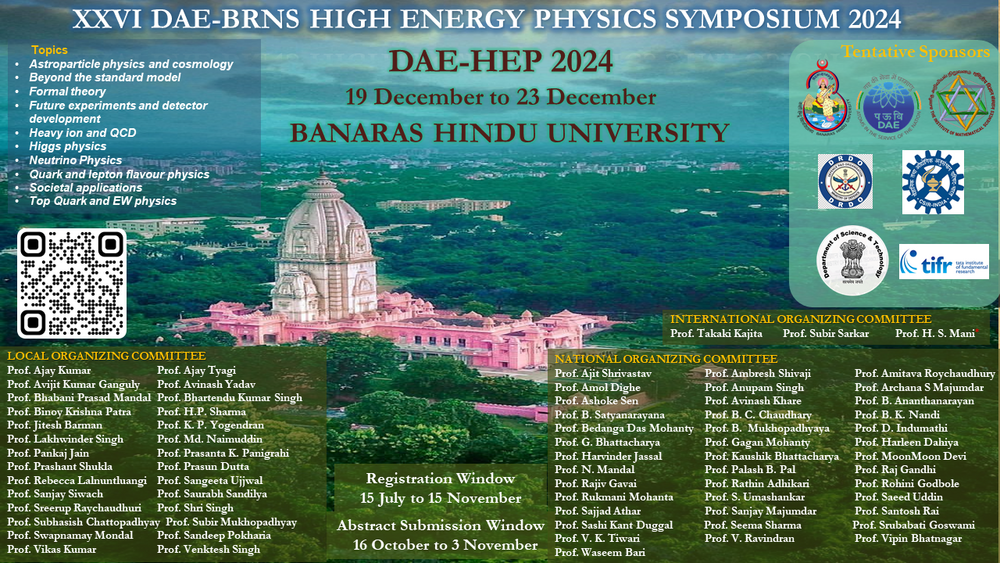Speaker
Description
Properties of multiplicity fluctuations in charged particles produced in Xe--Xe collisions at $\sqrt{s_{\rm NN}}$ = 5.44 TeV were studied using normalized factorial moments $F_{\rm q}$ in the framework of intermittency. A fundamental characteristic of the critical behaviour of a system undergoing phase transition is that it exhibits fluctuations of all scales. Study of fluctuations is thus one of the important techniques to explore phases of the QCD matter and to search for the critical end-point of the hadron--quark or quark--hadron phase boundary. Scaling properties of the multiplicity fluctuations of hadrons produced in the high-energy heavy-ion collisions are therefore significant to understand the system created in these collisions.
A study of the scaling behaviour of the normalized factorial moment $F_{\rm q}(M)$ with the number of bins ($M$) in ($\eta, \phi$) phase space was performed. A power-law scaling was observed for the charged hadrons recorded in the midrapidity region of the ALICE detector that indicates the self-similar particle production and the fractal nature of multiplicity fluctuations. The scaling exponent ($\nu$) obtained from the power-law scaling of $F_{\rm q}$ with $F_{\rm 2}$ specifies the scaling properties and characterizes the system under study.
Within the framework of Ginzburg-Landau (GL) formalism for second-order phase transition and for the two-dimensional Ising model simulated for quark--hadron phase transition, a universal value of scaling exponent ($\nu$) was obtained as $1.316 \pm 0.012 $ and 1.41 for Successive Contraction and Randomization (SCR) model simulated for high particle density fluctuations. Observations and results on the behaviour of the normalized factorial moments and the dependence of the scaling exponent on the transverse momentum bin width and its comparison with the Pb--Pb collisions at $\sqrt{s_{\rm NN}}$ = 2.76 TeV will be presented.
The dependence of $\nu$ on the centrality for two different $p_{\rm T}$ intervals shows a weak centrality dependence. Dependence of fractal dimension ($D_{\rm q}$) on the order parameter ($q$) hints at the multifractal system. Whereas, variation of the fractal parameter $\it{\lambda}_{\rm q}$ as a function of $q$ hints formation of single phase system. Observations and results are limited by low statistics and motivate for further investigations to get an insight about the multiparticle production in the heavy-ion collisions.
| Field of contribution | Experiment |
|---|

